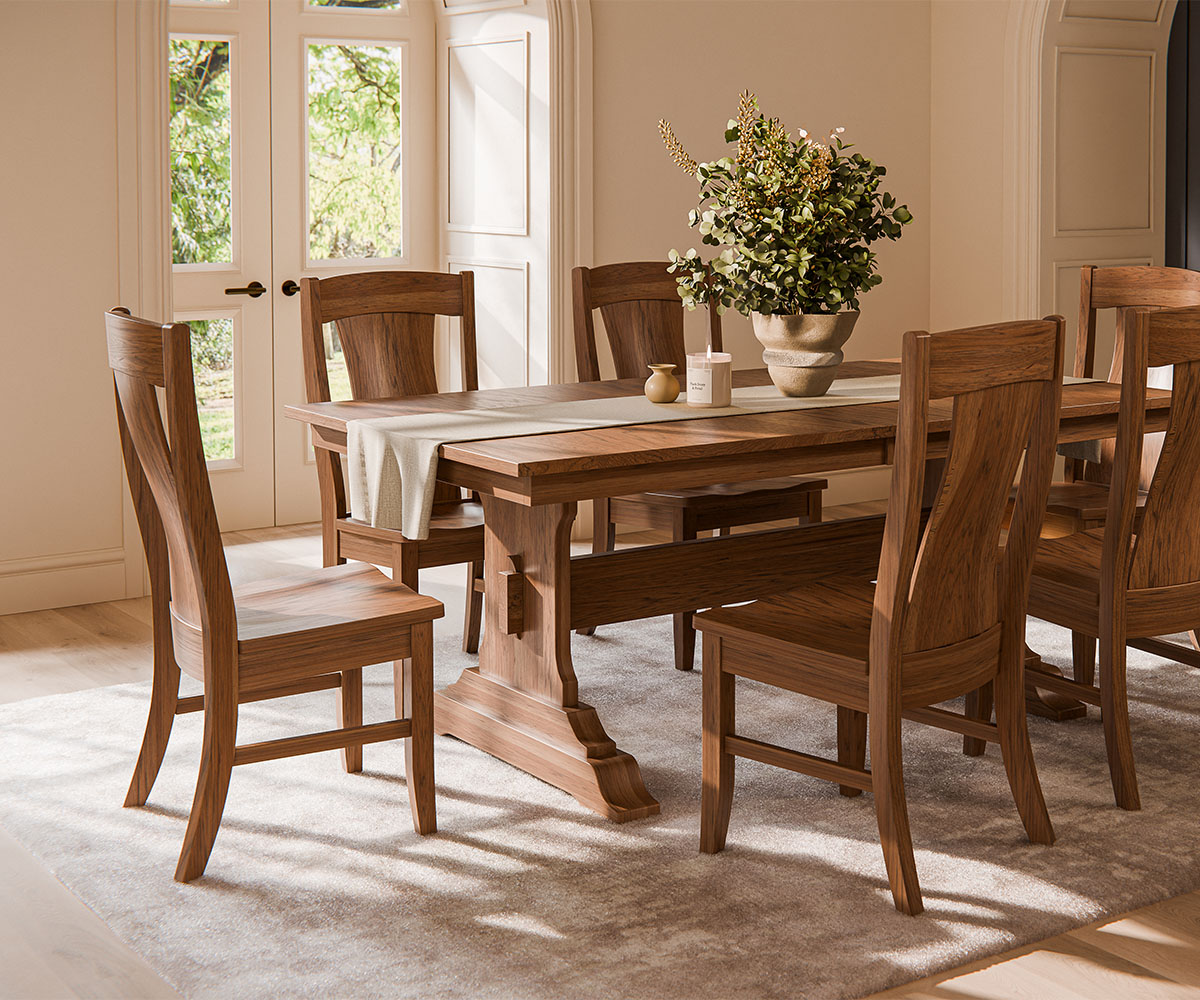Most furniture manufacturers would tell you that a solid wood table will last 10 to 15 years. But with the proper care and maintenance, you can protect your solid wood table and make it last for much longer, decades even.
If you’ve never cared for a wooden table, you may wonder: How can I extend its lifespan? Luckily, it’s not as tricky as it may seem. It requires consistency and TLC.
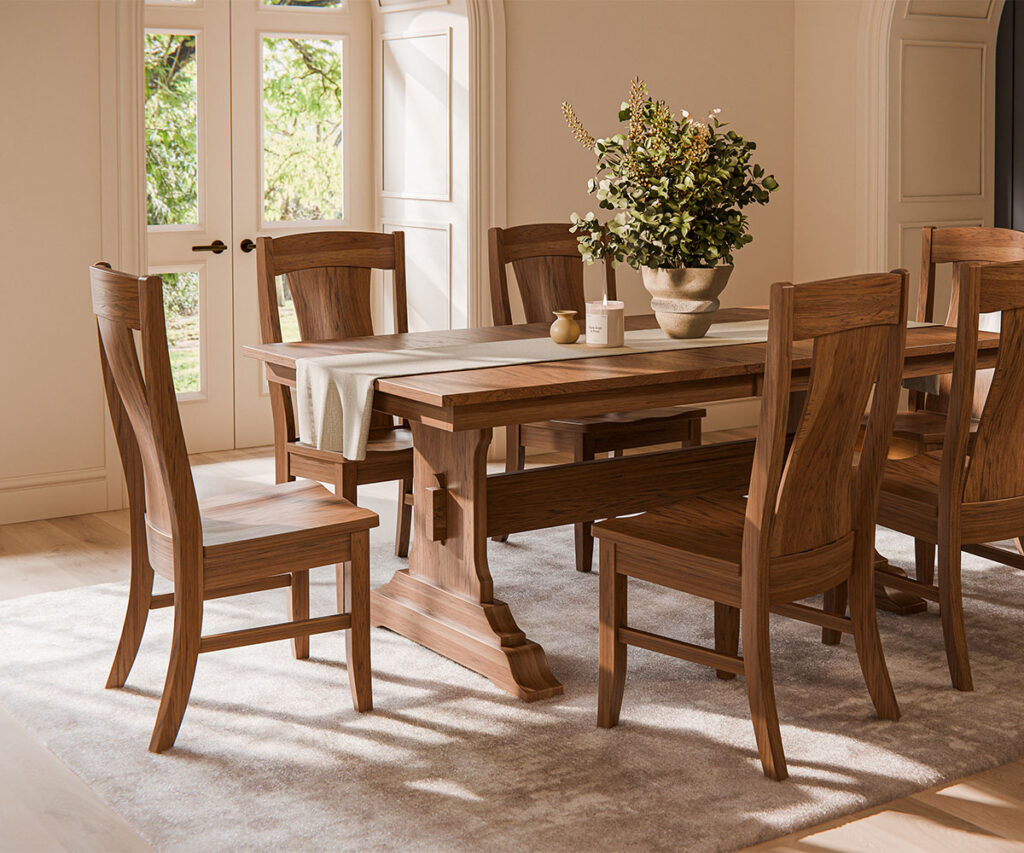
This guide will explain how to protect and clean a solid wood table to prolong its life. Pro Tip: Invest in Amish-made furniture
Step 1: Understanding Your Wood
Every piece of wood has a story. Knowing that story, even a little, makes caring for it more manageable. To better protect your solid wood table, the first step is to know the wood species you’re working with.

Oak

Like people, wood comes in all shapes and sizes, each with its character. Oak is known for its strength.
Oak’s grain is typically open and prominent, and its color can vary from pale ivory to rich, deep brown. Oak is easy to care for, but its open grain can sometimes collect dust and crumbs. The best solution is to dust it frequently—it only takes a minute!
The good news is that oak contains tannins, which means it’s resistant to insects and fungi. So you don’t need to worry about spills seeping in and rotting your wood table.
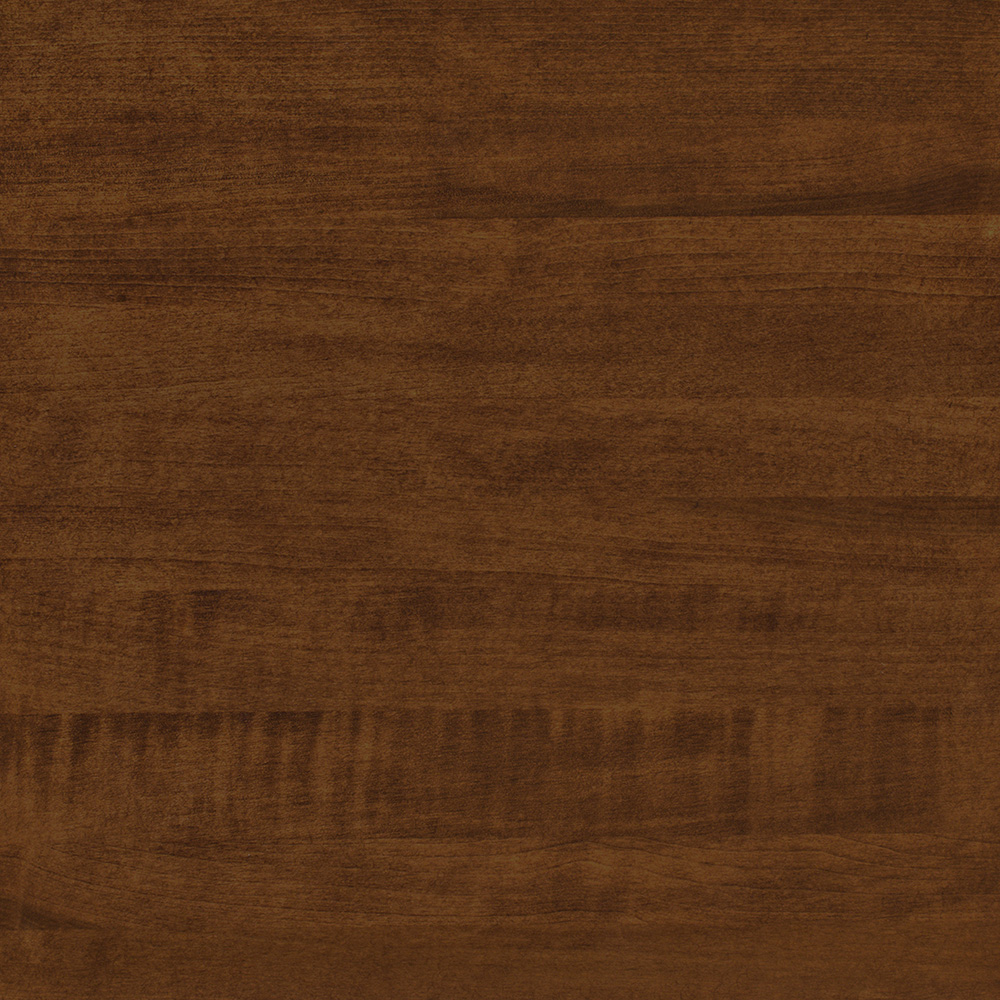
Maple
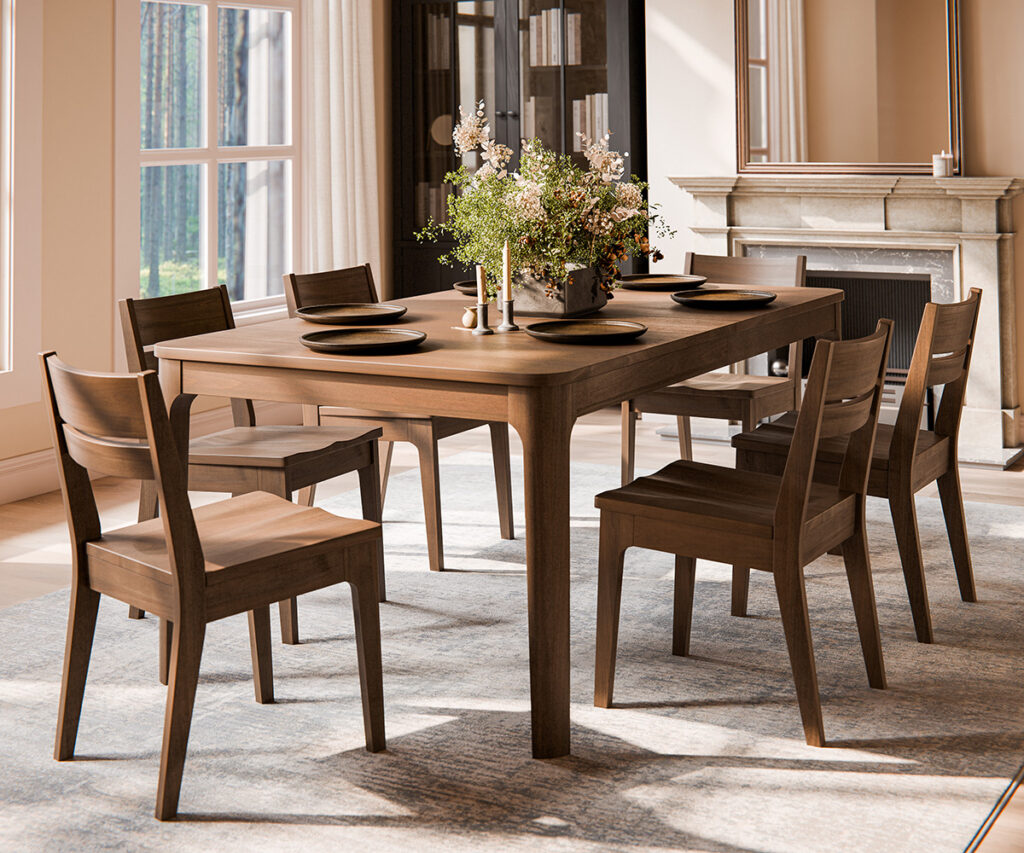
Maple is known for its hardness and smooth, even grain. It often has a subtle, warm tone, though some varieties can be pale.
Maple is susceptible to water damage, so coasters are a must. However, since maple is tough, it’s less vulnerable to scratches. That’s especially true if you opt for an Amish furniture manufacturer since they only pick the most durable wood for their tables.
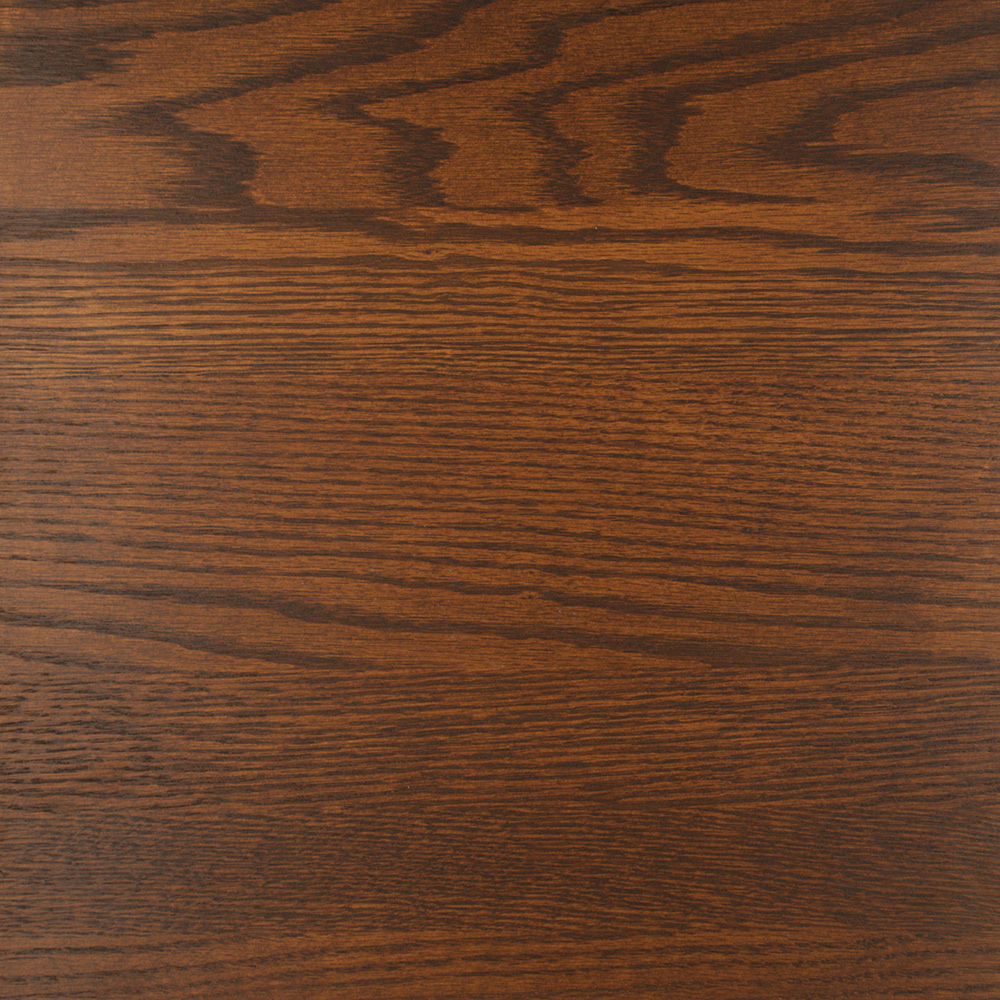
Cherry
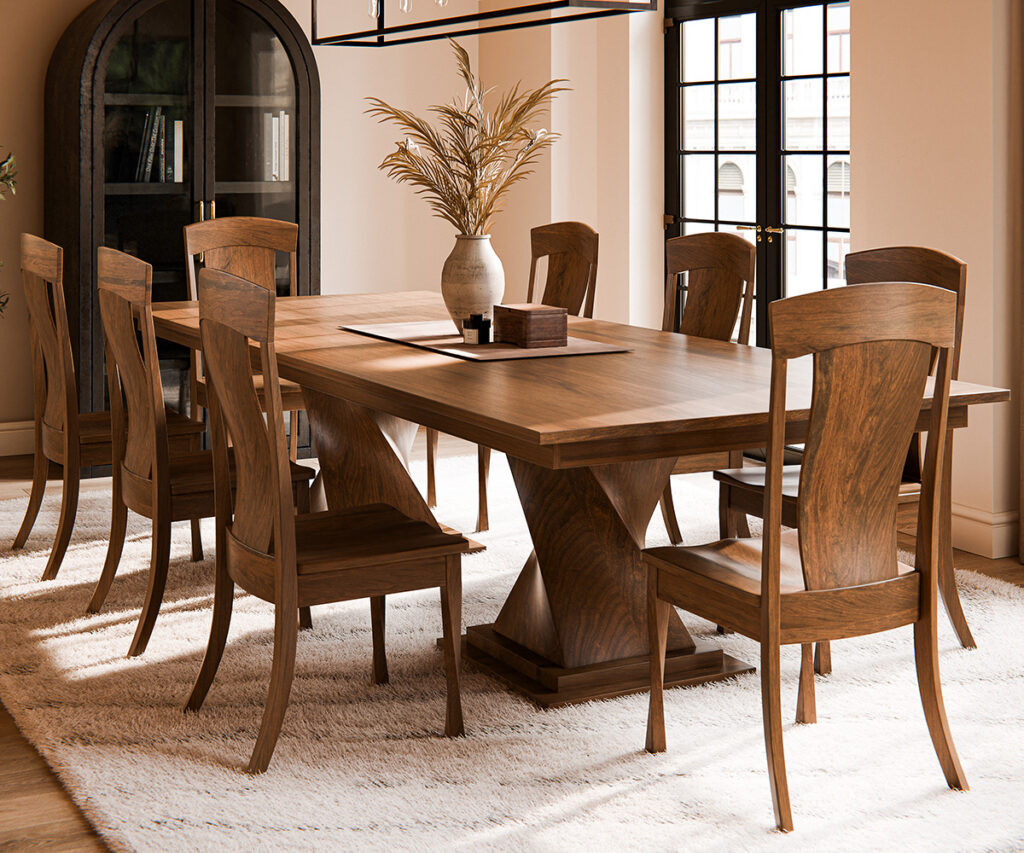
Cherry is a beautiful wood with a warm, reddish-brown color that deepens with age. It’s much softer than oak and maple. Its grain is usually straight and pleasing, giving it a smooth, elegant appearance.
The unique thing about cherry is that cherry heartwood ranges from pinkish to reddish brown and darkens over time. That makes up for the fact that it scratches pretty easily.

Walnut
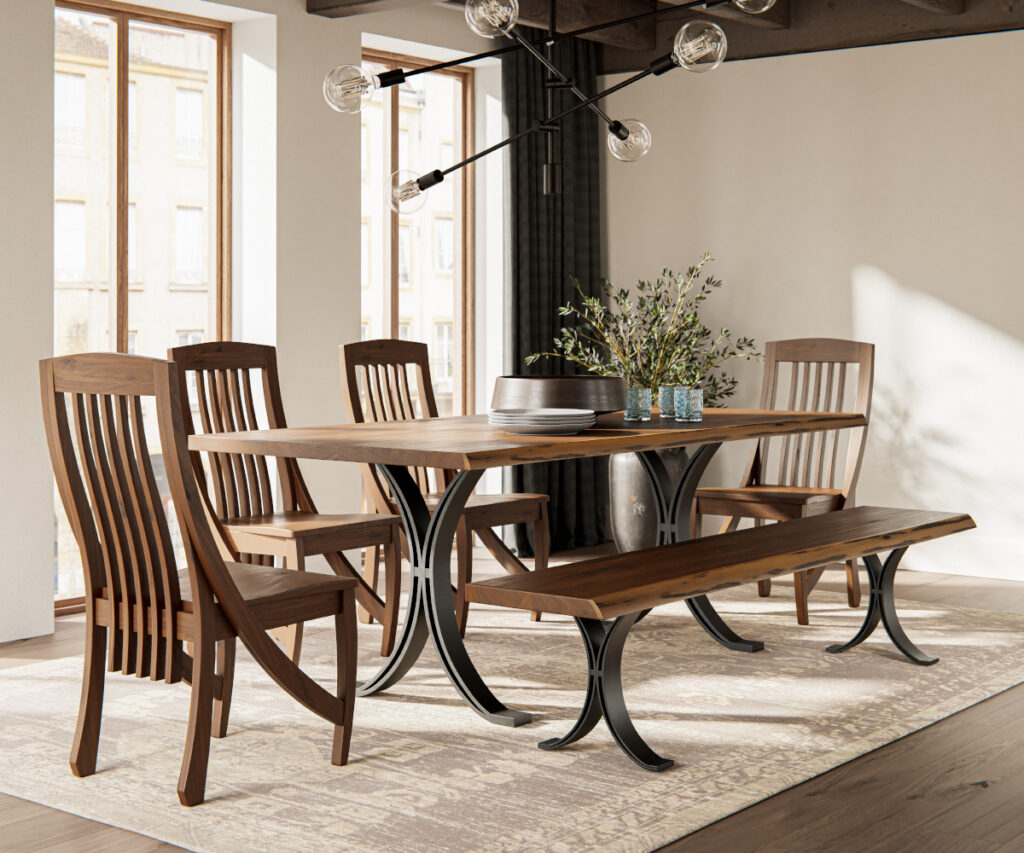
Walnut is a luxurious wood with a rich, chocolate-brown color and dramatic grain patterns. It’s known for its strength, durability, and sensitivity to light. Prolonged exposure to the sun can cause walnut wood to fade. Studies have shown that walnut wood can darken by 4.2 units under UV-A 340 lamp exposure and by 2.8 units under UV-A 351 lamp exposure! Just remember to keep your table out of direct sunlight.
Step 2: Identifying the Finishes
Your table’s finish is the protective layer that shields the wood from the harsh realities of everyday life – spills, scratches, and the ever-present threat of dust. Knowing the type of finish is important because each one has pros and cons and demands a specific care routine.
- Oil Finishes: These finishes penetrate deep into the wood, nourishing and improving its natural beauty. They have a warm, natural look and feel but are less durable than other options. Tung oil, Danish oil, and teak oil are typical.

However, oil finishes need to be reapplied frequently to maintain protection and can be more susceptible to watermarks.
- Varnish: This is a tough finish, forming a hard, protective shell over the wood. Varnish, whether oil-based or water-based, is highly durable and resistant to scratches and spills. That’s why it’s a popular choice for high-traffic areas.
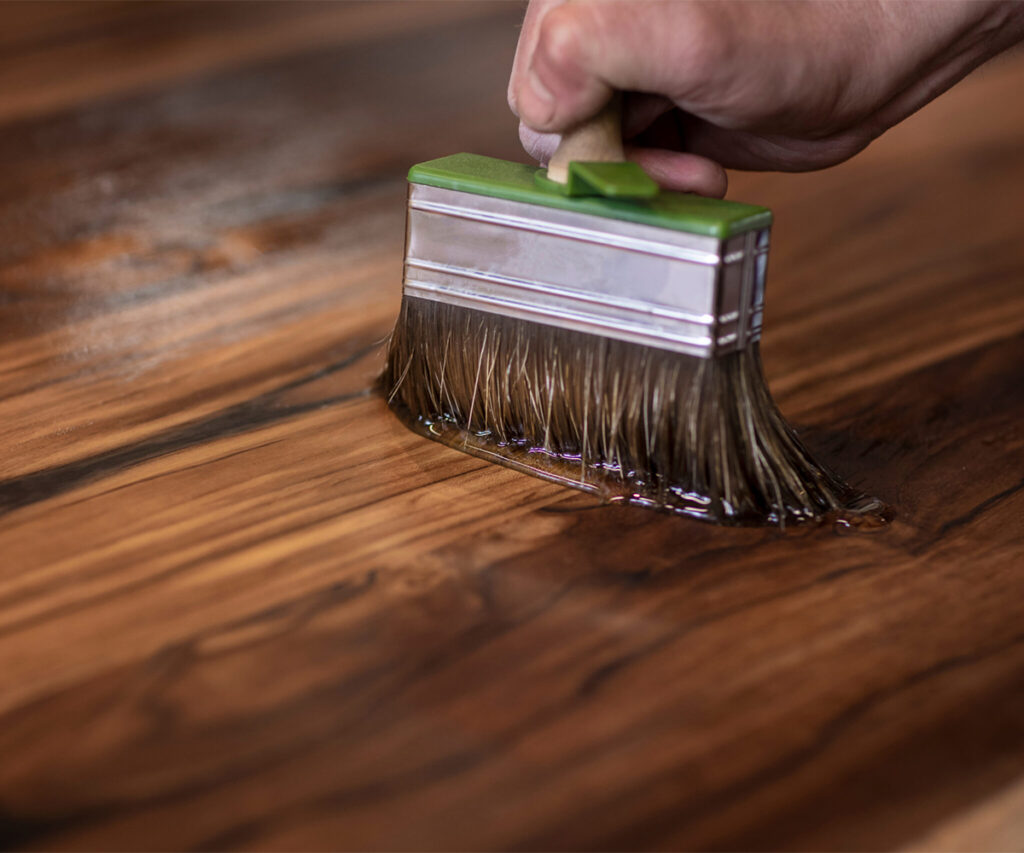
However, varnish can sometimes appear too glossy and even diminish the wood’s natural character. If damaged, it can also be more difficult to repair.
- Lacquer: Lacquer dries quickly and creates a smooth, glass-like finish. It’s incredibly durable and easy to clean, but it can be more prone to scratches and sometimes appear too “plasticy” for some tastes. It’s also pretty UV-sensitive, so we wouldn’t recommend using it for outdoor furniture.
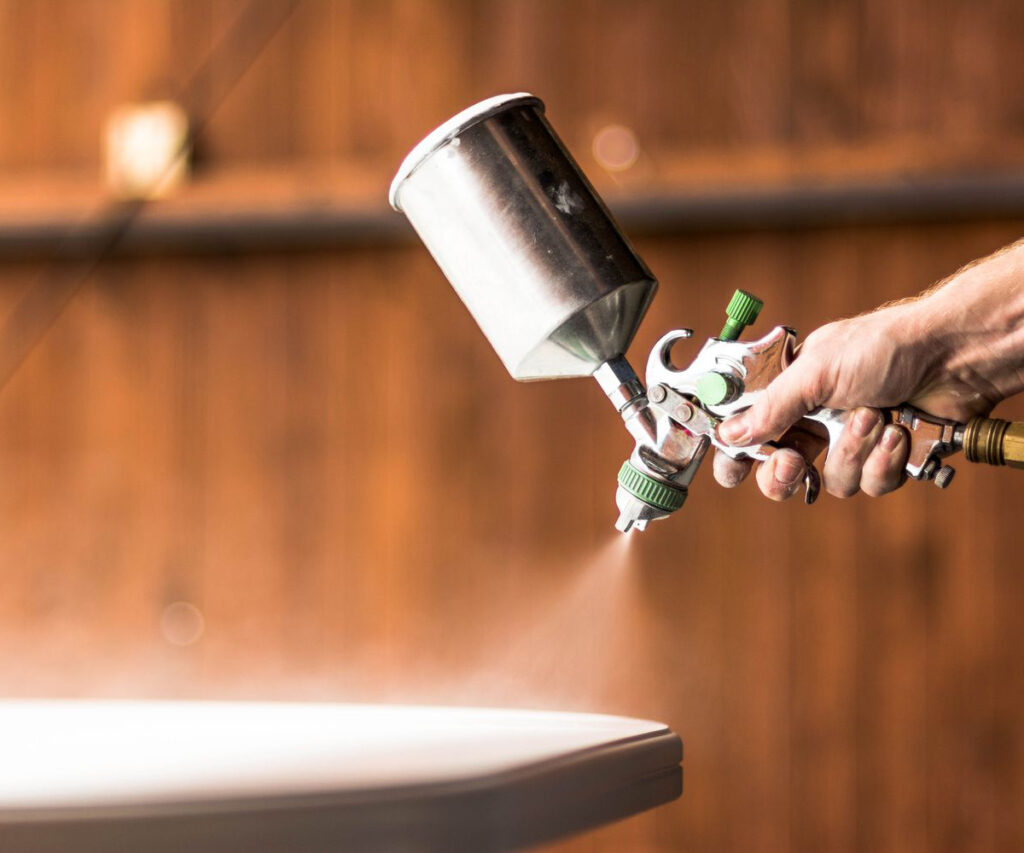
- Wax: Wax gives your table a subtle sheen and enhances the wood’s natural texture. It’s easy to apply and maintain but not very protective against spills and scratches. That’s why it’s often used as a topcoat over oil or on antique furniture.
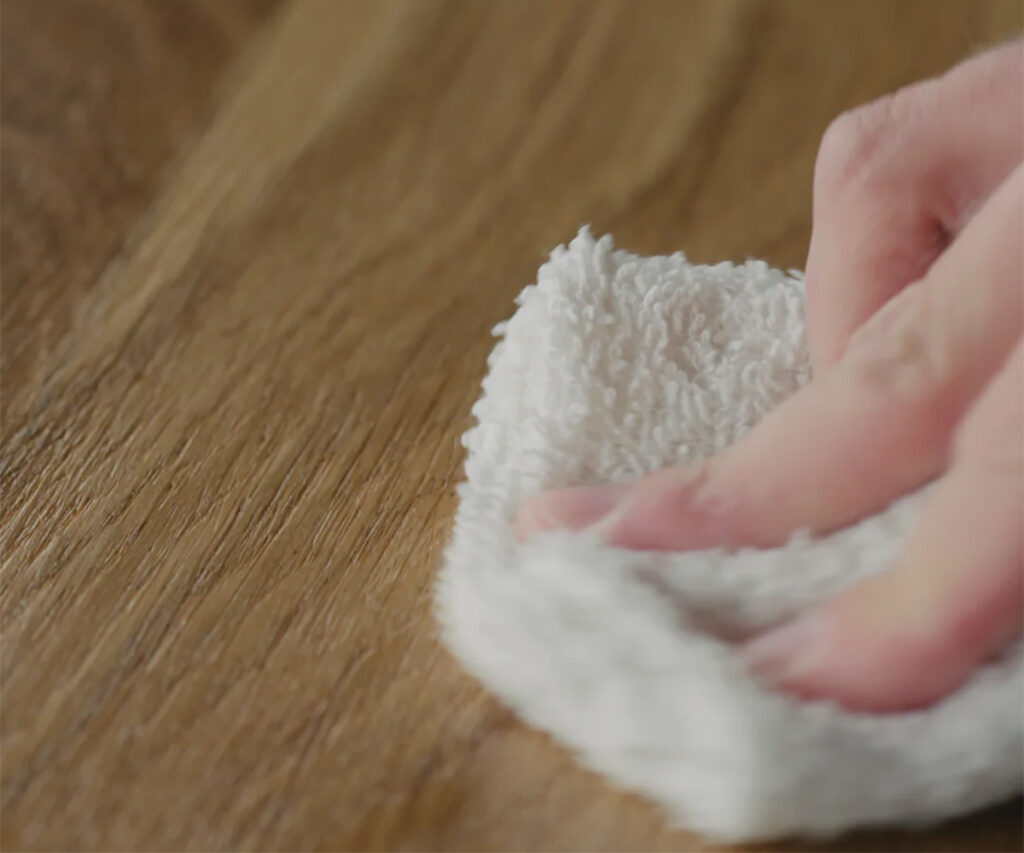
The question is, how do you know which finish is the one on your wooden table? It’s not that tricky – look closely for clues.
Does it have a high gloss? It’s likely varnish or lacquer. Does it feel smooth and slightly tacky? It might have an oil finish. Touch it gently—does it feel soft and slightly waxy? It could be wax.
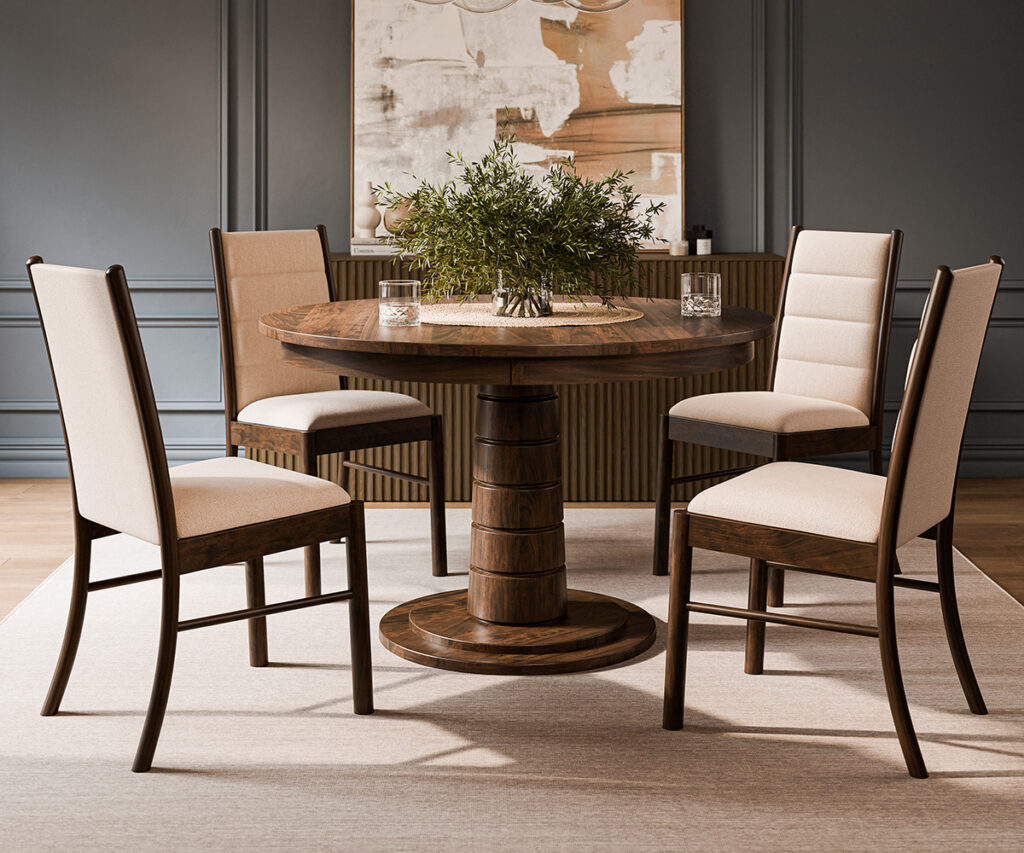
If unsure, a gentle rub test with a clean cloth can sometimes reveal the finish’s characteristics. You can ask the manufacturer what finish they used, which is much easier if you buy Amish-made.
Step 3: Daily Care and Cleaning
The most important step in how to protect solid wood tables is maintaining a daily routine of care and cleaning. That means you can no longer wait for the day you have guests over to wipe down the dust on your wooden table. Here’s what you should know:
Dusting

Dusting might seem mundane, but it’s the foundation of good table care. Regularly removing dust prevents it from settling into the grain and causing scratches. Keep these tips in mind when dusting your solid wood table:
- Opt for soft, non-abrasive cloths like microfiber or feather dusters. Avoid scratchy sponges, steel wool, or anything that might damage the surface.
- Dust your table toward the wood grain to avoid swirling dust and creating micro-scratches.
- Try to stick to weekly dusting or dusting more often if your table is in a high-traffic area.
Taking Care of Spills
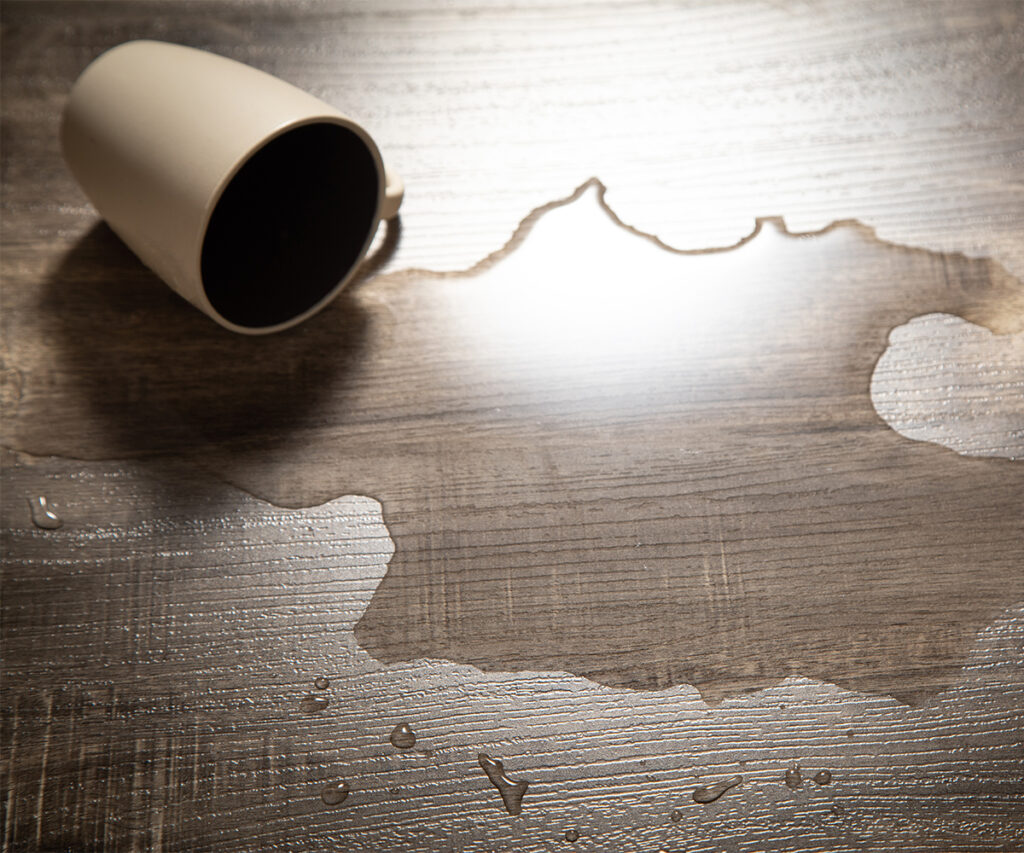
Spills are inevitable, but the wrong one can damage your wooden table forever.
Speed is key. The longer a spill sits, the more likely it is to penetrate the wooden table and cause a stain. Blot up spills immediately with clean, absorbent cloths or paper towels.
Wine, coffee, and oil spills tend to leave stains on wood. But when cleaning these spills, avoid harsh chemicals like acetone, bleach, or abrasive cleaners. These chemicals can affect the finish and even discolor the table.

You can use a mild soap-and-water solution or a special wood cleaner for tougher spills.
Always test any cleaning solution in a smaller area first – even if it’s been recommended to you!
Be Cautious with Temperature
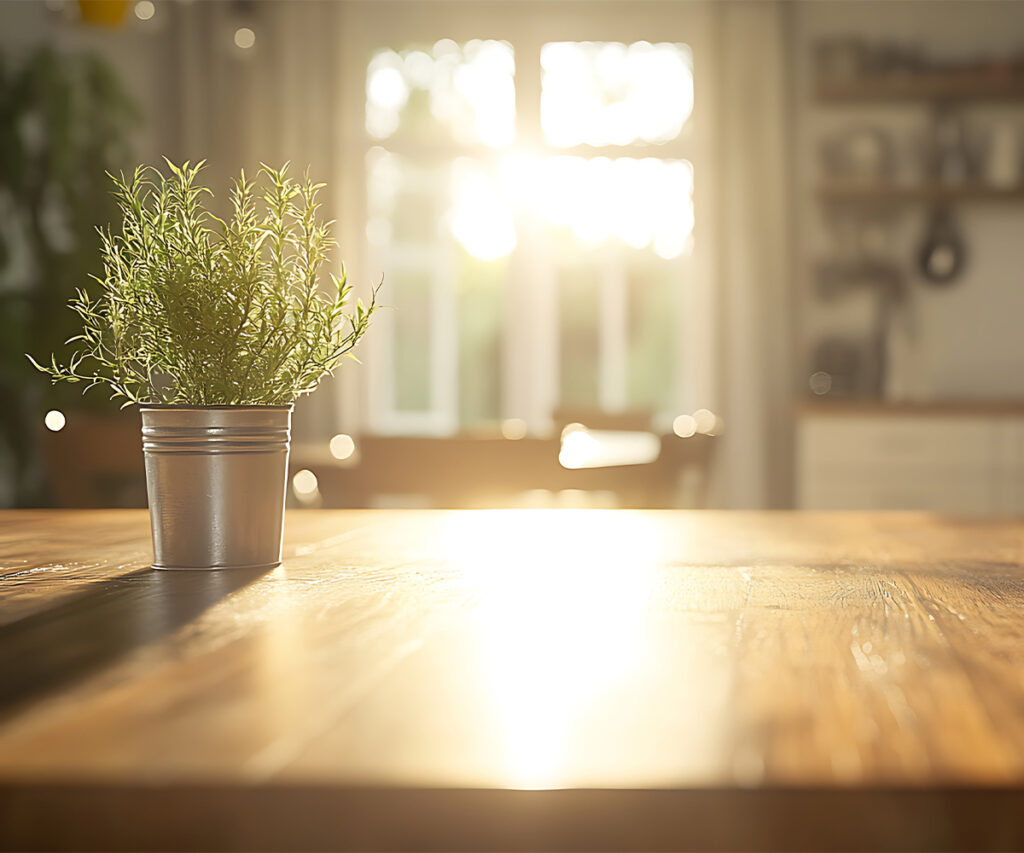
Wood is sensitive to fluctuations in heat. Extreme hot and cold can cause the wood to warp, crack, or even fade. So, avoid placing your wooden table in direct sunlight.
Of course, sunlight isn’t the only type of heat that can damage your wooden table. Even a too-hot cup of joe can have the wrong impact. Always use coasters to protect your solid wood table from hot items like cups, plates, and pot holders.
As a good rule of thumb, try to prevent your table’s exposure to drastic temperature changes. Keep the wooden table away from direct heat sources such as radiators and fireplaces, and avoid placing it near drafty windows or doors.
Step 4: Deep Cleaning
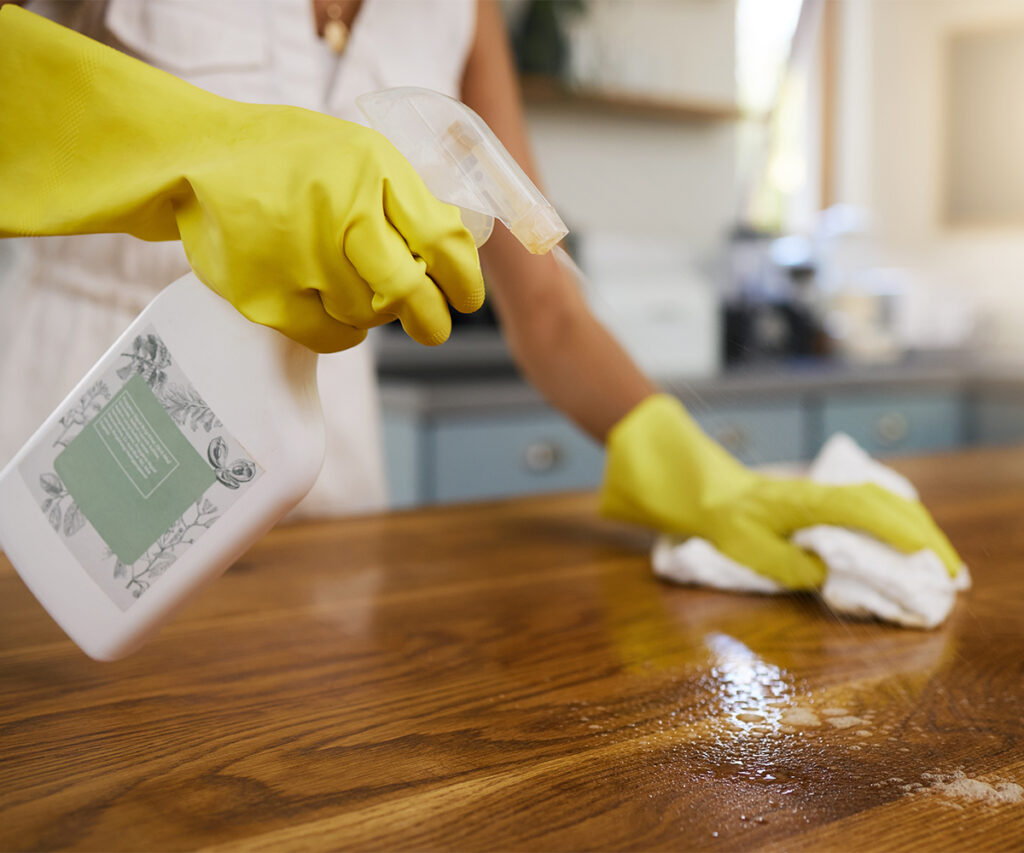
When to Deep Clean
If you’re unsure when to clean your wooden table, watch it closely. These are telltale signs that your table needs a more thorough cleaning.
For instance, if scratches start showing up, your cloth may be too rough. If you notice watermarks, water was left on the table long enough to penetrate the finish. If your table has lost its original luster, it may be due to a buildup of dirt, grime, or a worn-out finish.
Deep Cleaning Methods
These problems mean it’s time to thoroughly clean your wooden table. Here’s how you can do that:
- Select a cleaner specifically formulated for your type of wood and finish. Avoid any harsh chemicals that could strip the finish or damage the wood.
- Apply the right cleaner with a soft cloth, working toward the grain. Avoid scrubbing, which can create even more micro-scratches.
- Dry the table immediately with a clean cloth to prevent water stains to best protect your solid wood table.
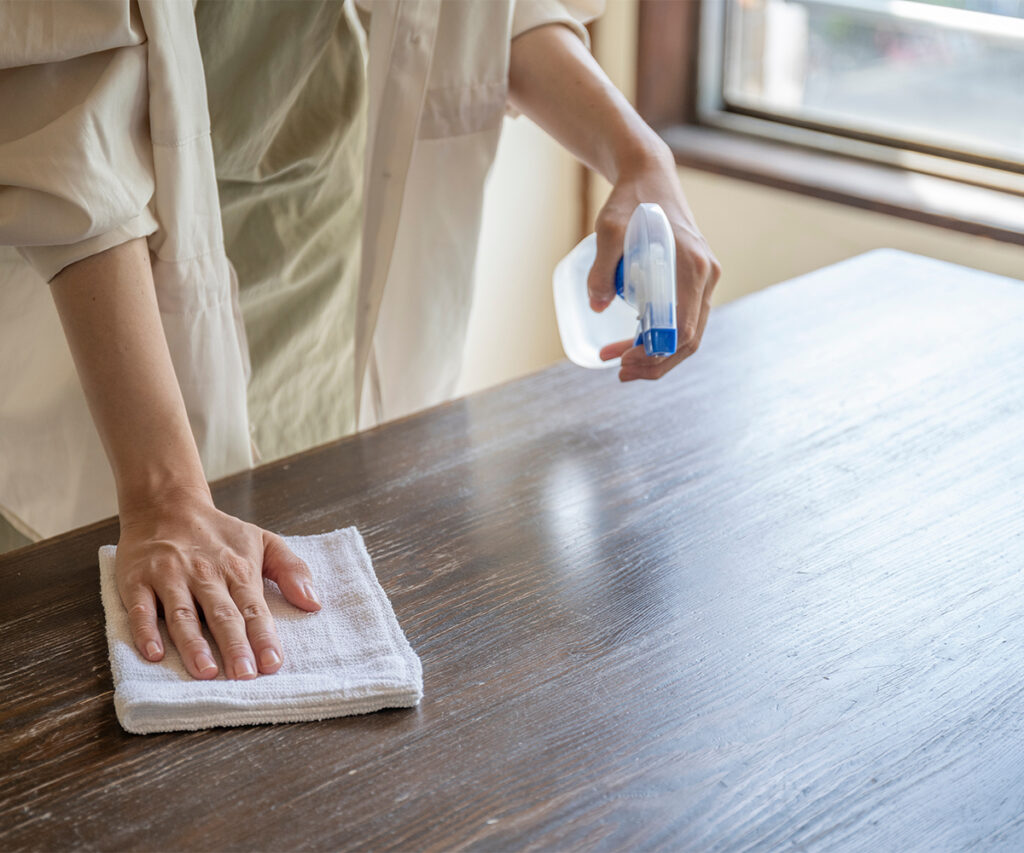
Step 5: Refinishing
If the existing finish is no longer effective, you may need to refinish it. Luckily, it’s pretty simple.
First, use a chemical stripper to remove the previous finish and sand it down. Start with coarse-grit sandpaper to remove imperfections and gradually move to finer grits for a smooth finish. Then, you can apply a stain to color the wood and seal it with a topcoat like varnish, lacquer, or oil.
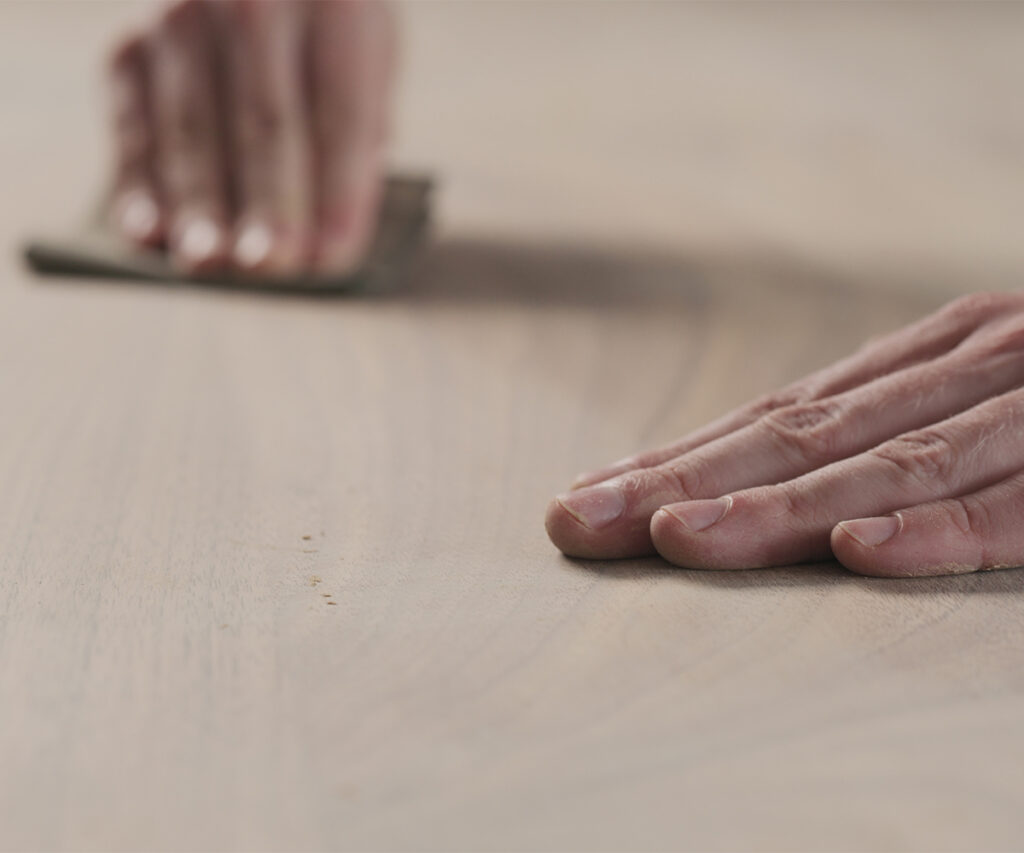
Invest in Reliable and Long-Lasting Wood Tables Today

All these tips and tricks are fantastic for keeping your wood table looking its best. But let’s be honest: the real secret to a long-lasting table starts long before the first spill- with the initial purchase.
Investing in a durable, Amish-made table from the get-go can save you a lifetime of headaches. Now, that’s a table worth cherishing for decades to come.

